Abstract
In the autumn of 1967, plague broke out among hill people in western Nepal, a country that had not previously reported human plague. Two persons were infected from an active sylvatic focus at a grazing area 5 km from Nawra, the village where the epidemic occurred. The second patient introduced plague into the village where the rest of the cases occurred. Clinical and epidemiological evidence suggests that plague was spread both by the airborne route, resulting in 6 cases of tonsillar plague and 1 case of primary pneumonic plague, as well as by infected fleas, resulting in 17 cases of bubonic plague. Since no evidence of a rodent epizootic was uncovered in the village itself, and because of the distinct clustering of the bubonic cases, human-to-human spread of plague by infected ectoparasite vectors, presumably Pulex irritans, is thought to have occurred.
This focus probably represents the most southerly boundary of the central Asian plague area yet identified.
Full text
PDF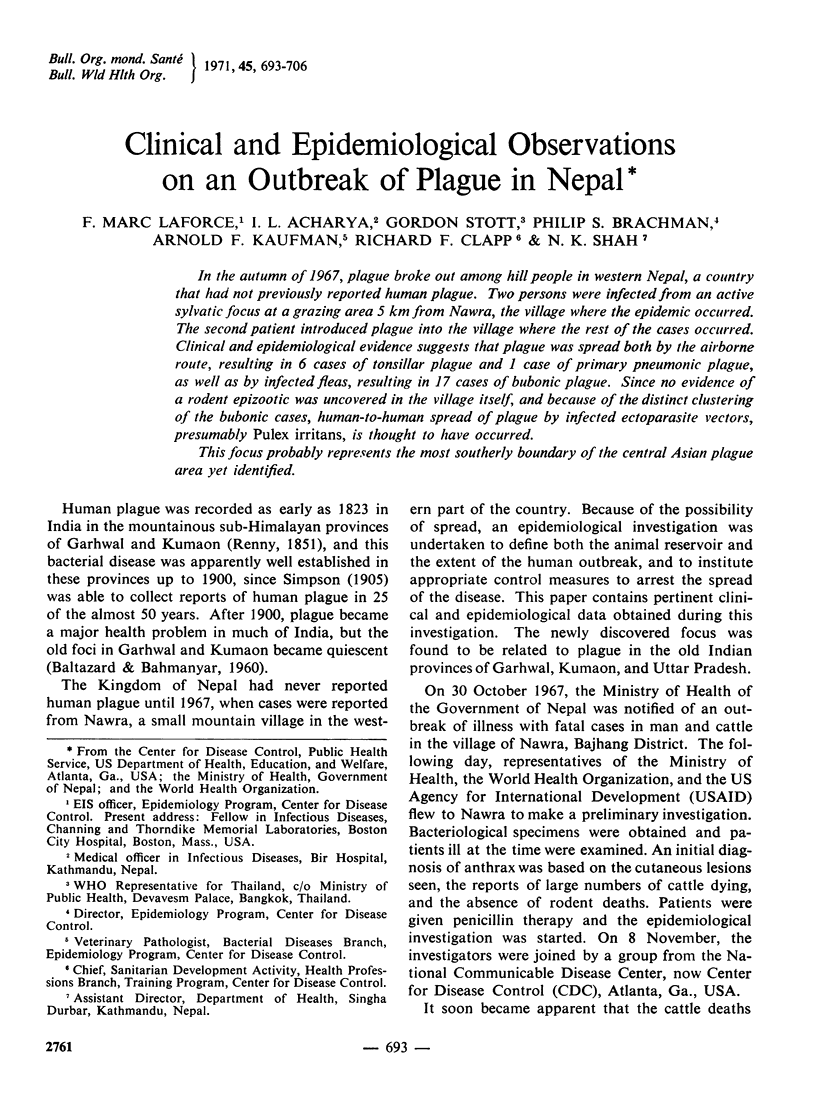
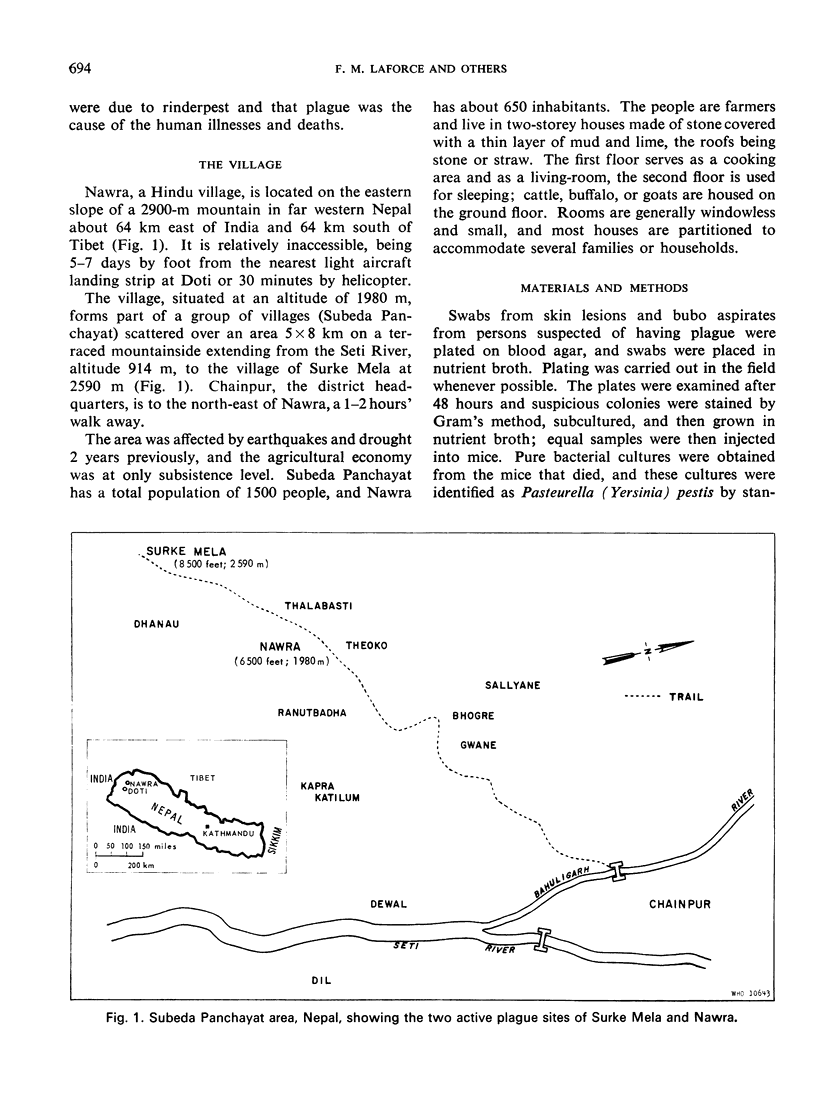
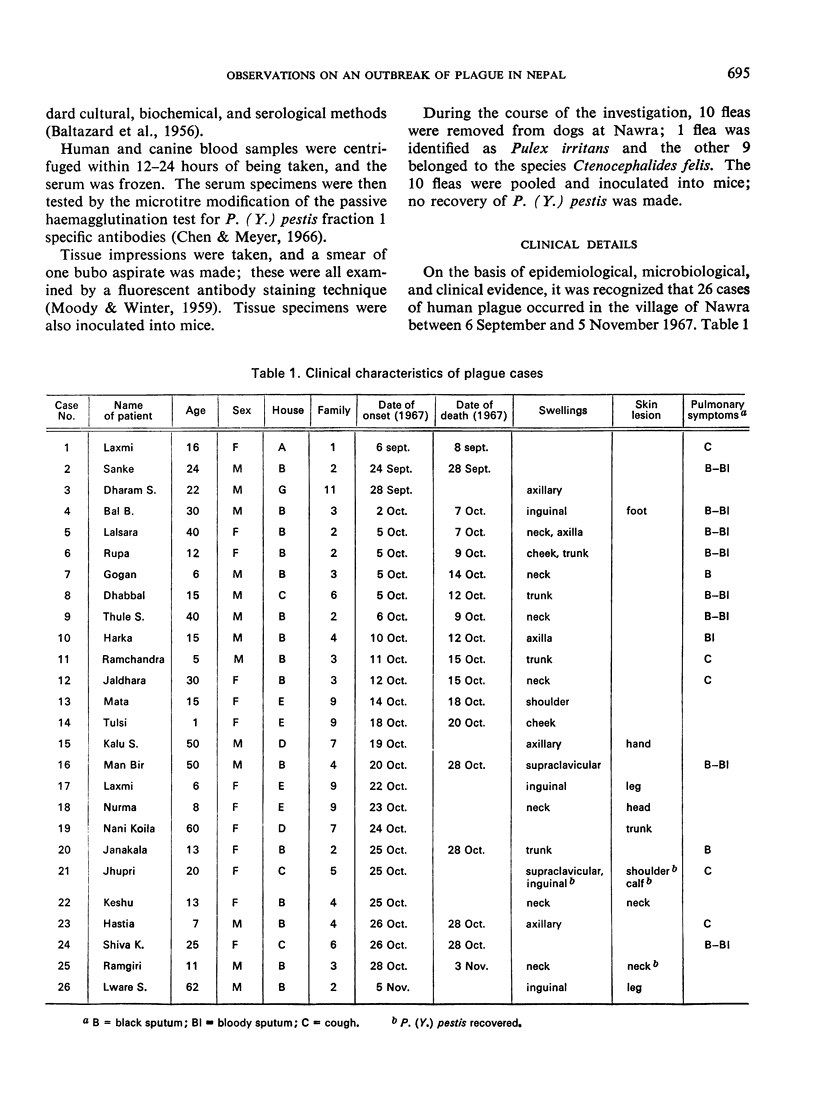
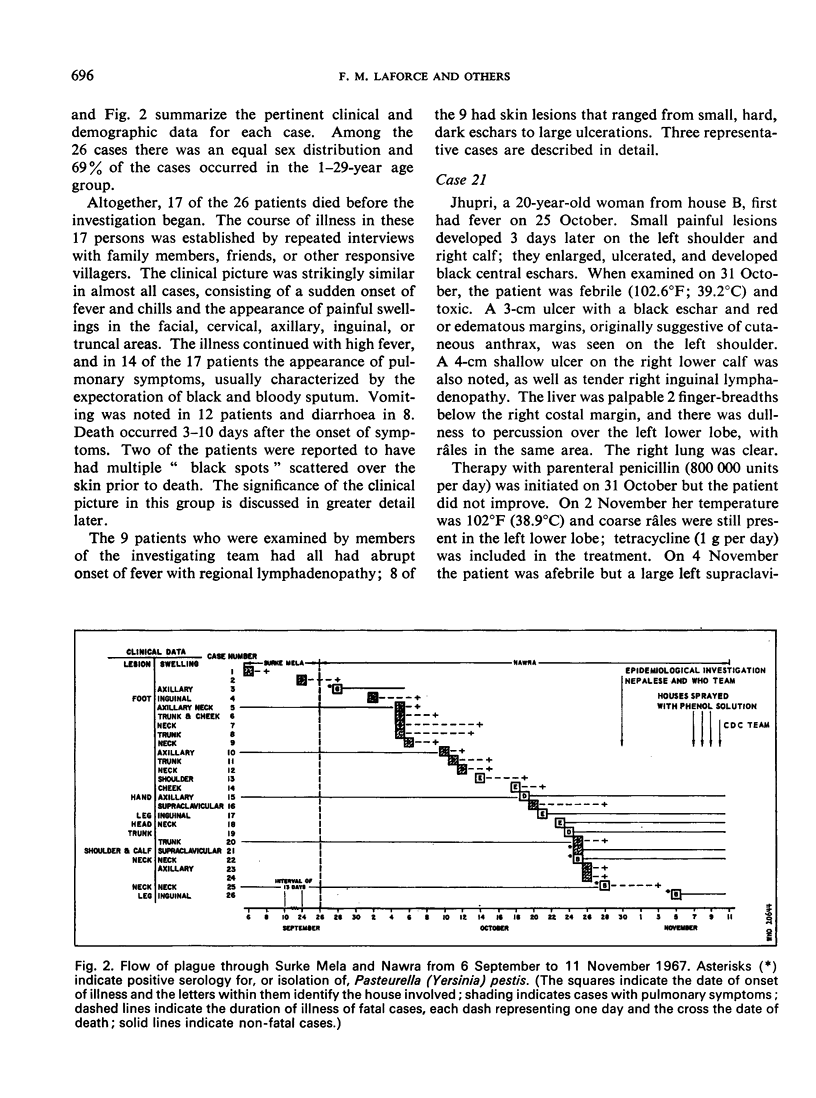
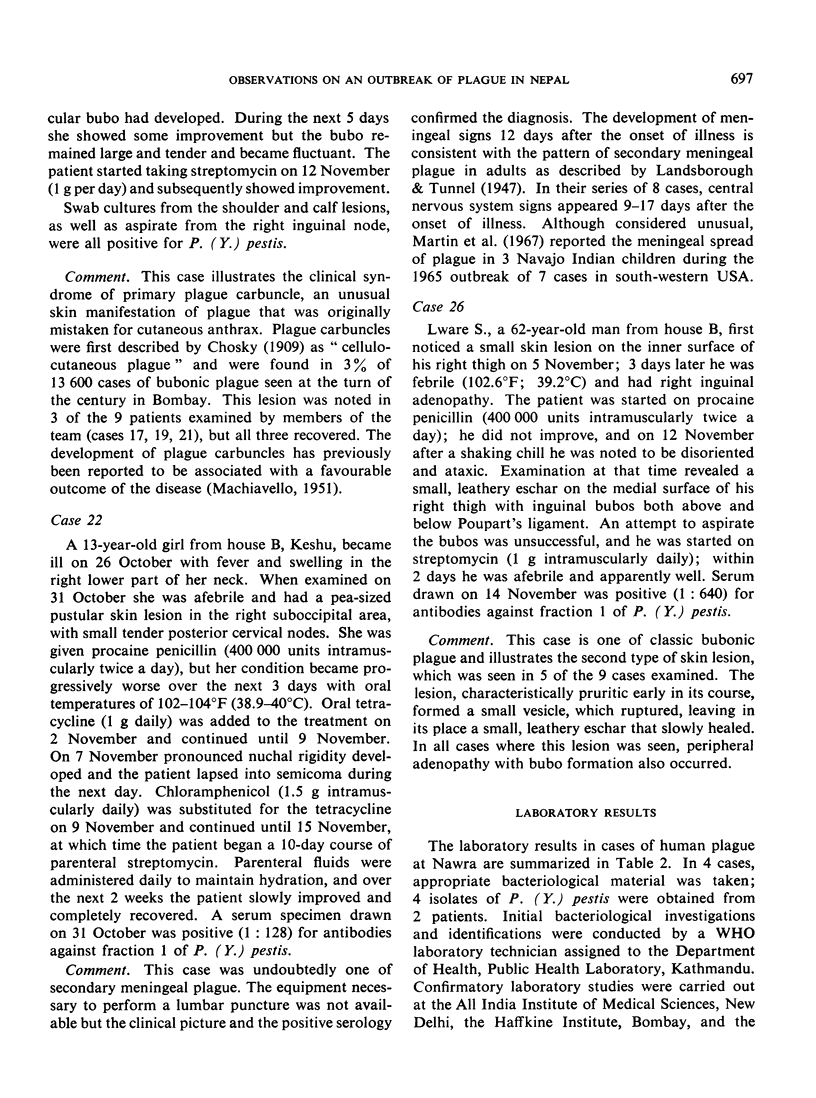
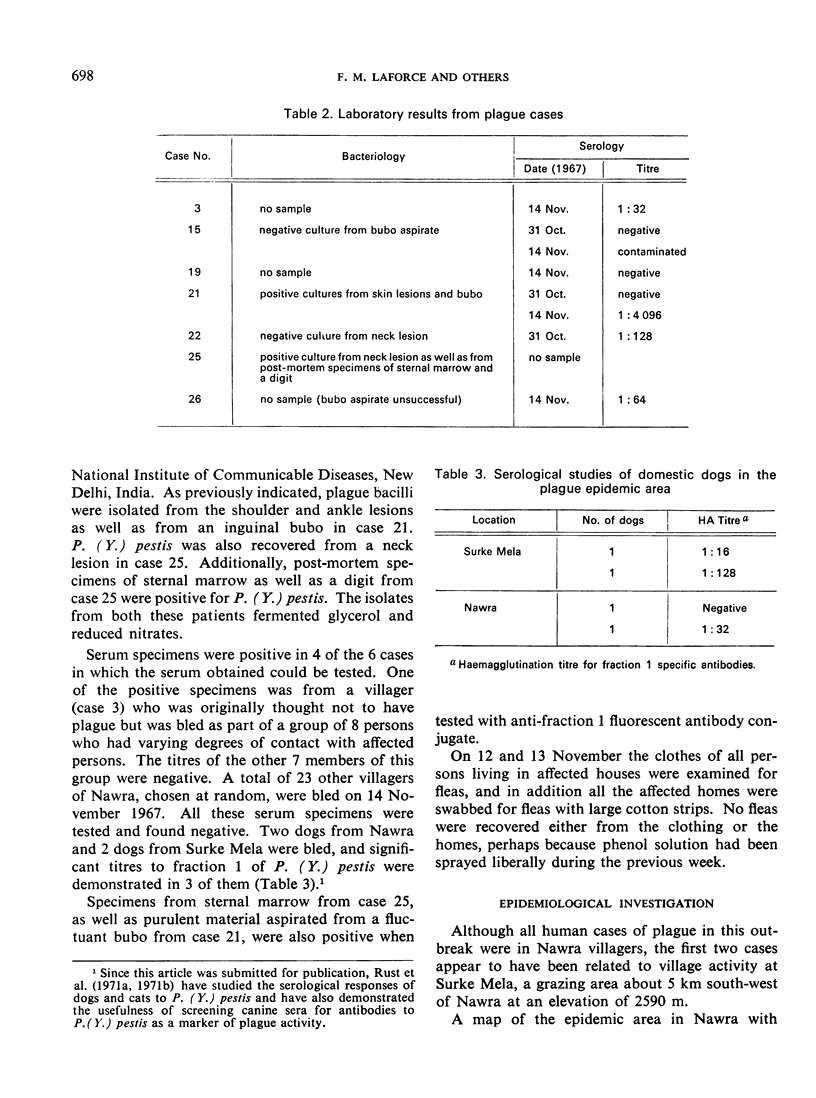
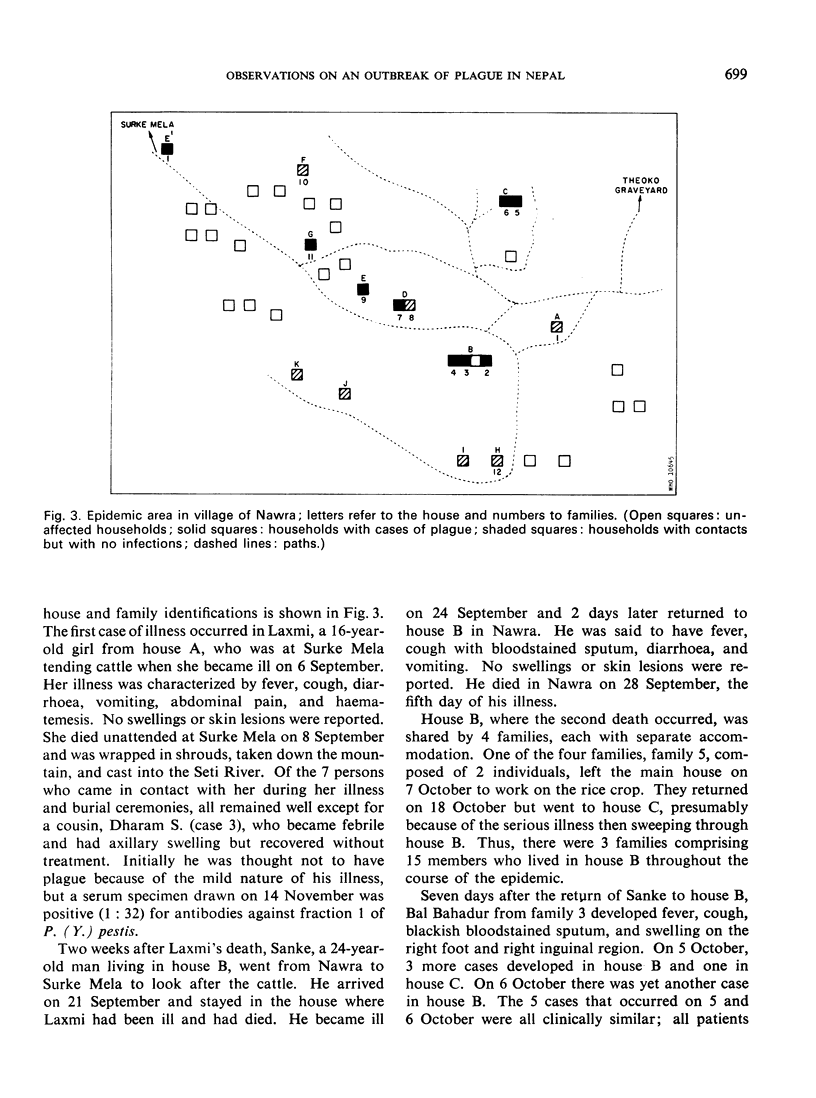
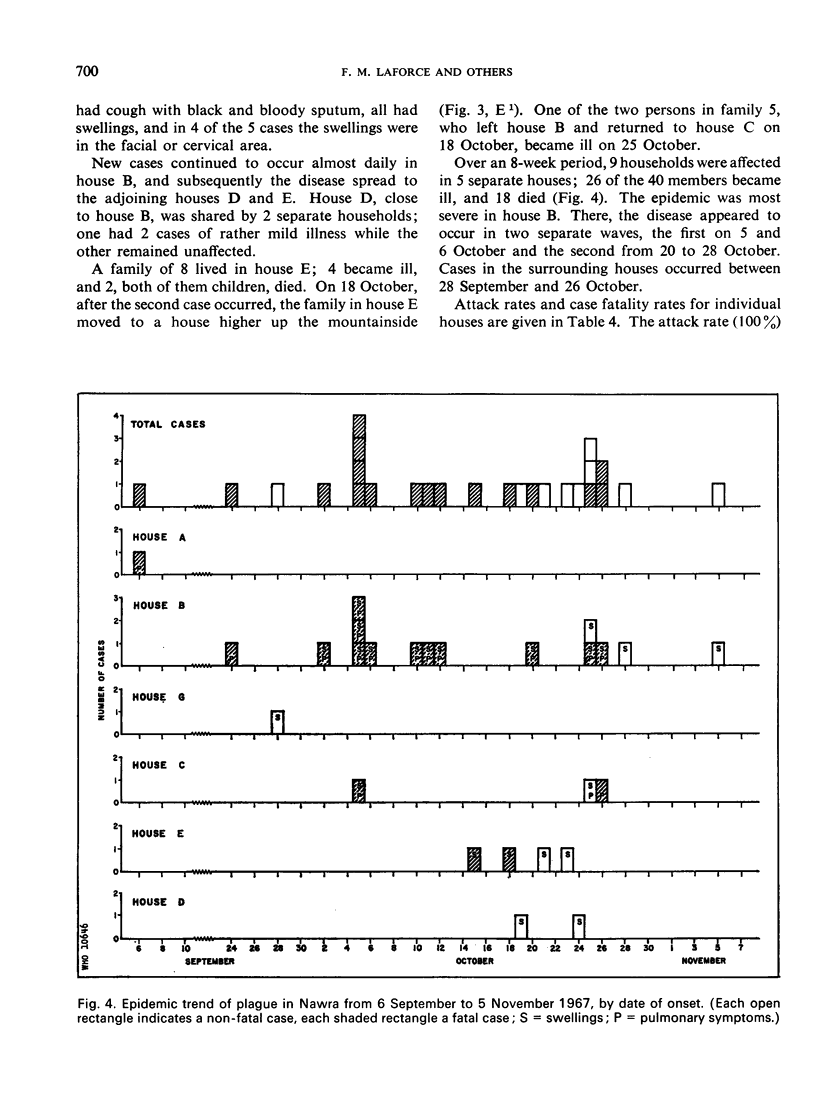
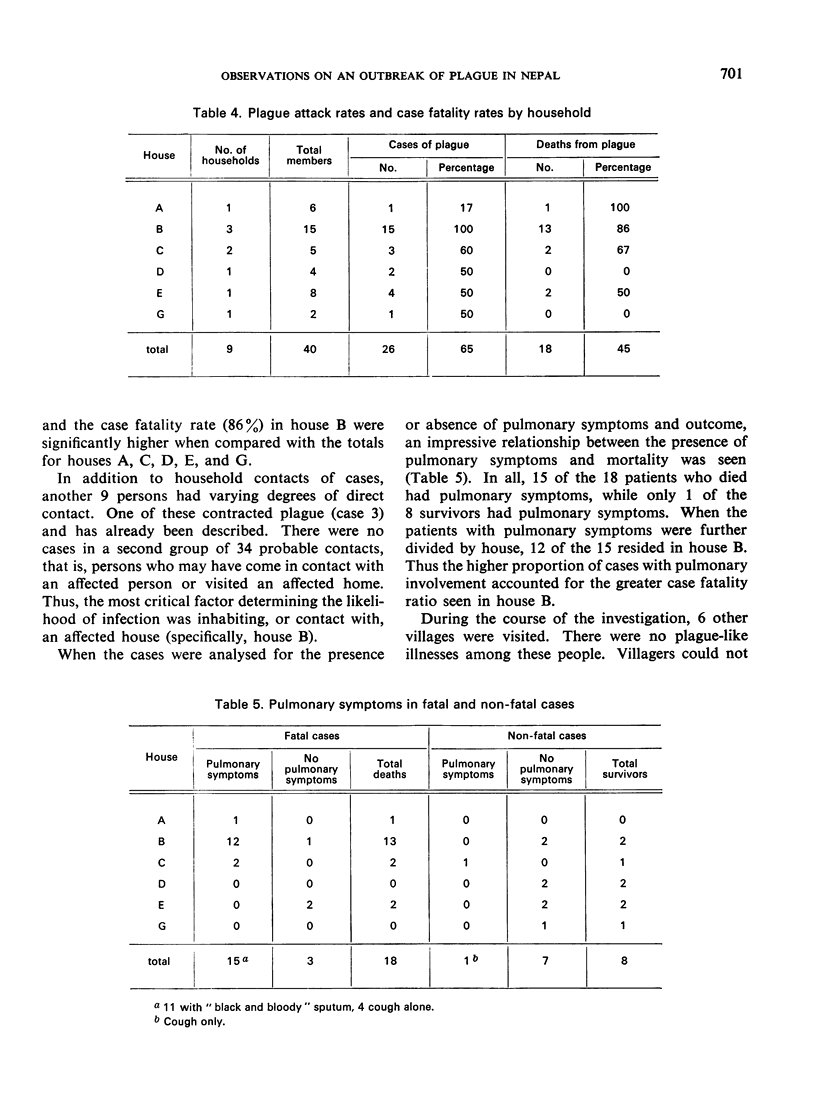
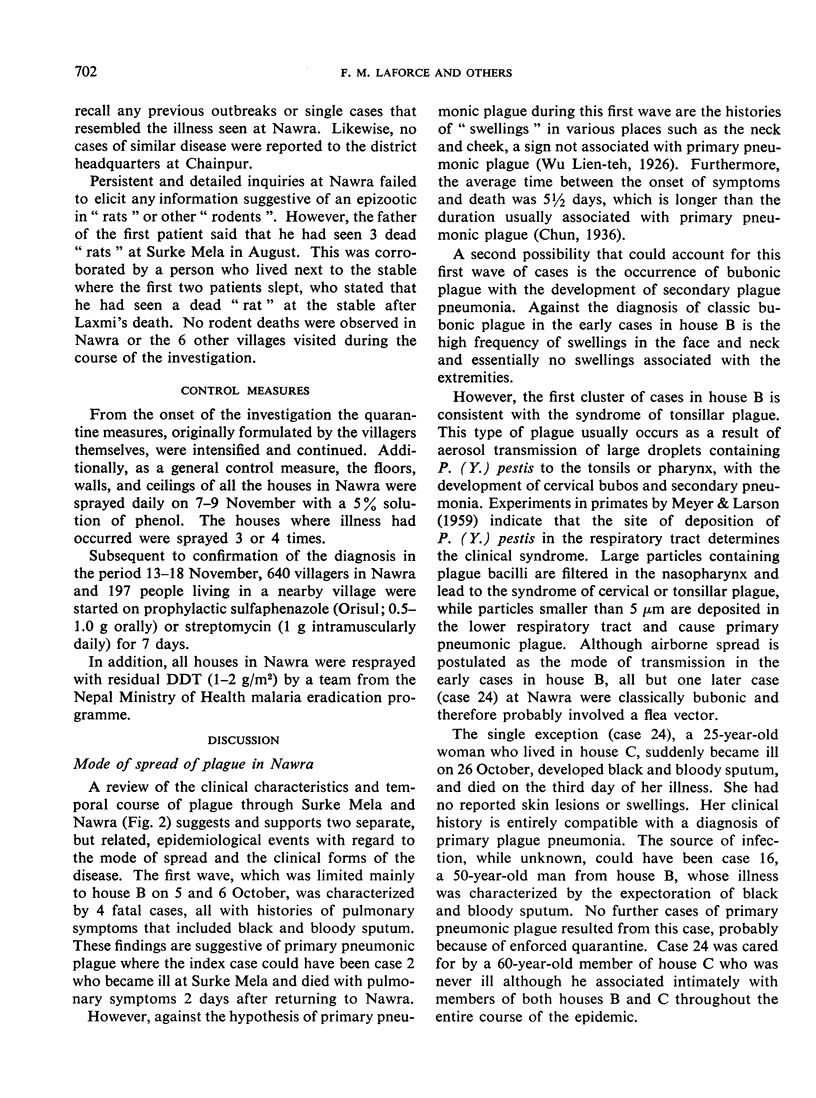
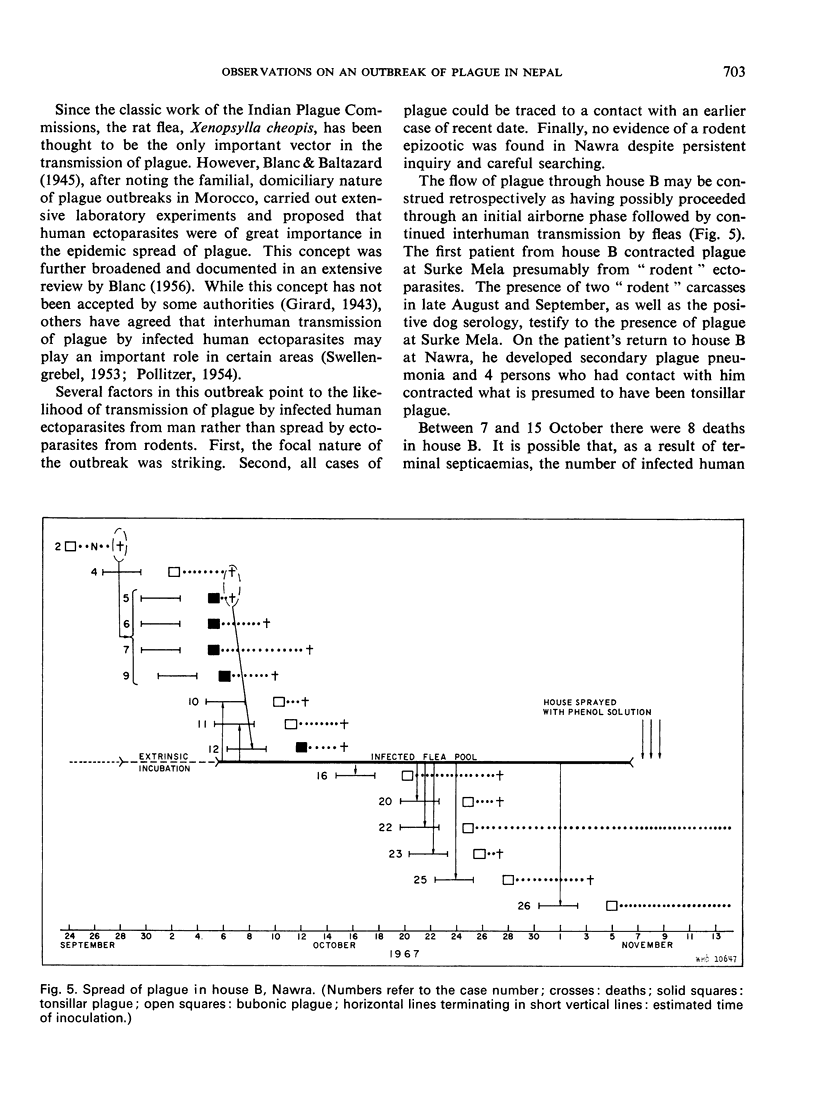
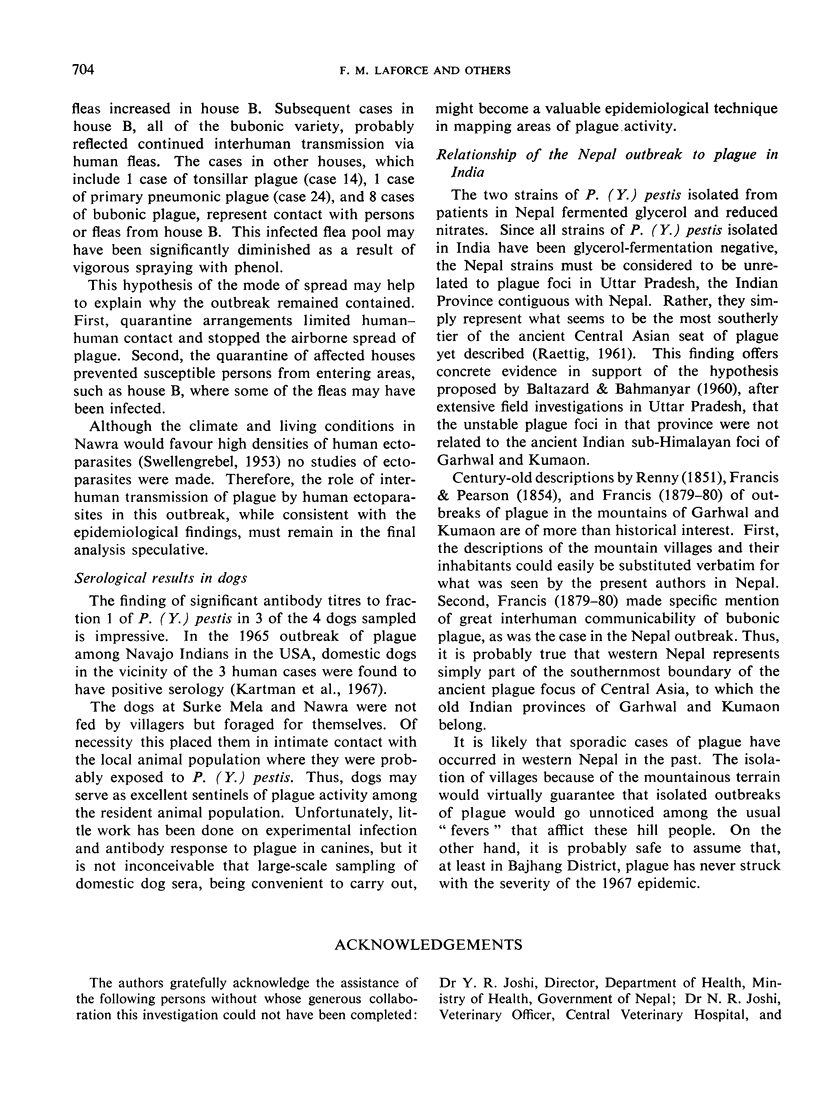
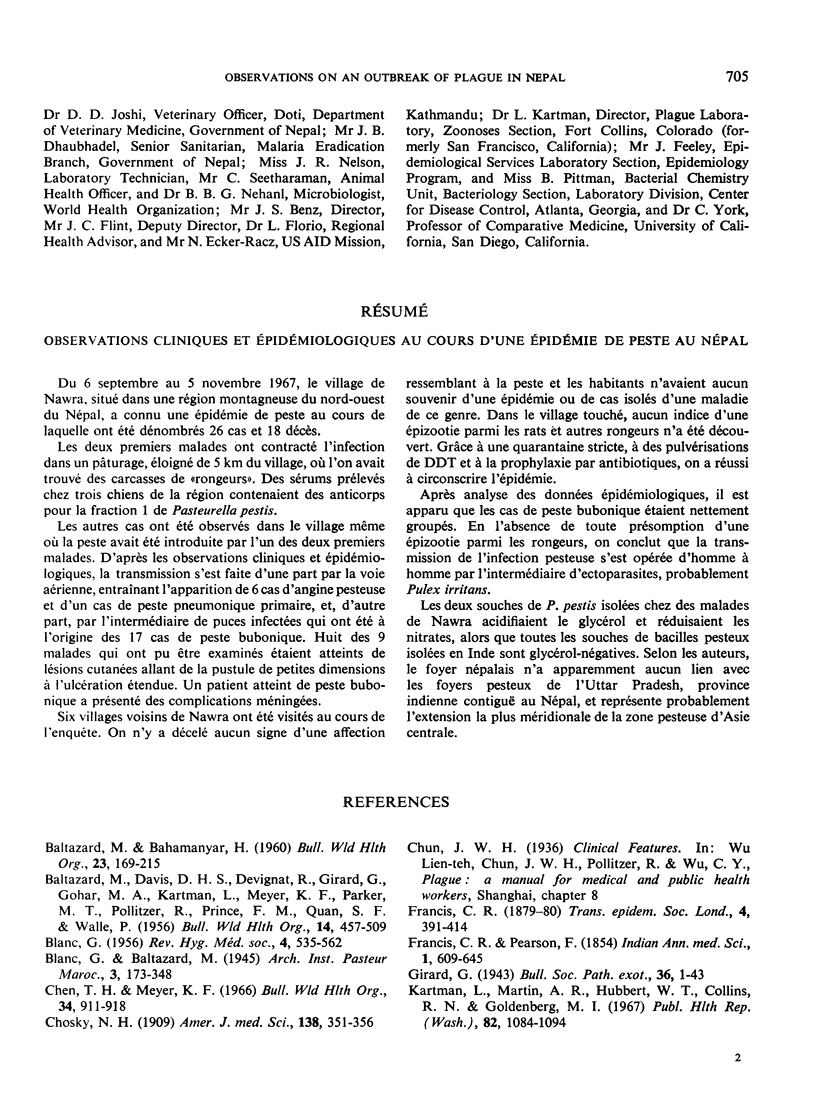
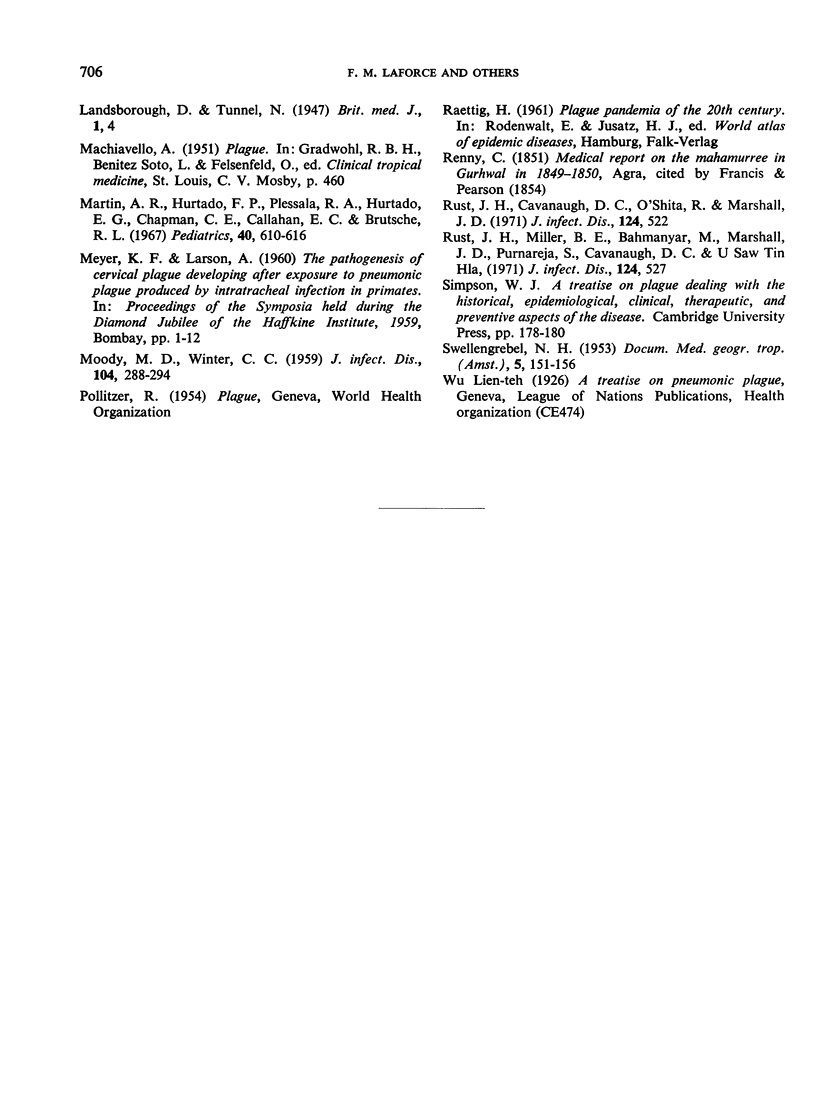
Selected References
These references are in PubMed. This may not be the complete list of references from this article.
- BALTAZARD M., BAHMANYAR M. [Research on plague in India]. Bull World Health Organ. 1960;23:169–215. [PMC free article] [PubMed] [Google Scholar]
- BALTAZARD M., DAVIS D. H., DEVIGNAT R., GIRARD G., GOHAR M. A., KARTMAN L., MEYER K. F., PARKER M. T., POLLITZER R., PRINCE F. M. Recommended laboratory methods for the diagnosis of plague. Bull World Health Organ. 1956;14(3):457–509. [PMC free article] [PubMed] [Google Scholar]
- BLANC G. Une opinion non conformiste sur le mode de transmission de la peste. Rev Hyg Med Soc. 1956 Sep;4(6):535–562. [PubMed] [Google Scholar]
- Chen T. H., Meyer K. F. An evaluation of Pasteurella pestis fraction-1-specific antibody for the confirmation of plague infections. Bull World Health Organ. 1966;34(6):911–918. [PMC free article] [PubMed] [Google Scholar]
- Goldenberg D. M., Witte S. The treatment of polycythemia vera with cytosine arabinoside. Arzneimittelforschung. 1967 Aug;17(8):1084–1085. [PubMed] [Google Scholar]
- LANDSBOROUGH D., TUNNELL N. Observations on plague meningitis. Br Med J. 1947 Jan 4;1(4487):4–7. doi: 10.1136/bmj.1.4487.4. [DOI] [PMC free article] [PubMed] [Google Scholar]
- MOODY M. D., WINTER C. C. Rapid identification of Pasteurella pestis with fluorescent antibody. III. Staining Pasteurella pestis in tissue impression smears. J Infect Dis. 1959 May-Jun;104(3):288–294. doi: 10.1093/infdis/104.3.288. [DOI] [PubMed] [Google Scholar]
- Martin A. R., Hurtado F. P., Plessala R. A., Hurtado E. G., Chapman C. E., Callahan E. L., Brutsché R. L. Plague meningitis. A report of three cases in children and review of the problem. Pediatrics. 1967 Oct;40(4):610–616. [PubMed] [Google Scholar]
- Rust J. H., Jr, Cavanaugh D. C., O'Shita R., Marshall J. D., Jr The role of domestic animals in the epidemiology of plague. I. Experimental infection of dogs and cats. J Infect Dis. 1971 Nov;124(5):522–526. doi: 10.1093/infdis/124.5.522. [DOI] [PubMed] [Google Scholar]
- Rust J. H., Jr, Miller B. E., Bahmanyar M., Marshall J. D., Jr, Purnaveja S., Cavanaugh D. C., Hla U. S. The role of domestic animals in the epidemiology of plague. II. Antibody to Yersinia pestis in sera of dogs and cats. J Infect Dis. 1971 Nov;124(5):527–531. doi: 10.1093/infdis/124.5.527. [DOI] [PubMed] [Google Scholar]
- SWELLENGREBEL N. H. Researches on ectoparasites of man in the vicinity of Marrakech (Morocco). Doc Med Geogr Trop. 1953 Jun;5(2):151–156. [PubMed] [Google Scholar]


